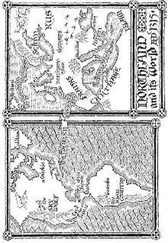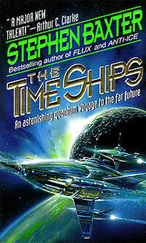However, by 1922, it had become clear that the Martians achieved this enormous compression of matter with the use of very powerful electrical and magnetic fields. And our investigations of these comparatively familiar technologies had advanced our own capabilities in these areas by, some would say, decades.
Edison’s bomb was called an ‘explosively pumped flux compression generator’ – a flux bomb, to the soldiers who used it. Its purpose was simple: to produce, for but an instant, in a restricted area, extremely powerful electrical and magnetic fields.
It achieved this by exploring a quirk of electromagnetic physics (a quirk to me! – a miracle of theorising and practical application to the physicists, I dare say). If you have a magnetic field, and surround it with a conductor – say, a band of copper wire – and then you contract that band, the magnetic flux through the conductor, contained by the wire, will stay the same strength – but its intensity , you see, the density of that power, as it is squeezed, must become much higher. It’s as simple as that, and you can demonstrate the principle with a schoolroom experiment, an electromagnet and a few bits of wire.
Now scale it up. Wrap your conductor and your magnetic field in a few packets of high explosive. Set that off in a careful design so that the explosive forces push inwards – and the compression of the magnetic field becomes enormous, if only for an instant, before the whole thing blows itself apart…
The point is, as Edison realised, that Martian machines depend on electrical fields for their operation. They have what Walter Jenkins once described as a ‘sham musculature’ comprised of discs inside a sheath of elastic. When an electric field is applied, these discs, polarised, are drawn together or pushed apart. The result is the remarkably graceful ‘limbs’ of any Martian machine, from the great legs of a fighting-machine to the finest of the manipulative tentacles of a handlingmachine – and all of it controlled by electrical and magnetic fields. And if those fields were disrupted, by a sufficiently powerful electromagnetic pulse nearby…
I am told, by witnesses from Menlo Park itself, that the devices Bill Woodward brought to Harry and Marigold, packages each easily carried by a single person, could produce pulses in the tens of terawatts and the millions of amperes: that is, more powerful than a lightning strike. Thus it was, in the course of the attack on New York, humans at last turned the lightning on the Martians.
The detonations themselves seemed overwhelming to Harry, huddling by a wall. They left him with a ringing in his ears that persisted for days.
When he emerged from cover he found that only two of their bombs had worked. But those two had done tremendous damage to the Martians. As Harry watched, one of the great fighting-machines fell like cut timber, legs stiff as wood, and crashed down into an already ruined house. The other machines seemed paralysed, the busy excavators and handlers frozen in their tracks. The living Martians, stuck in their machines, tried to scramble out, and hooted to each other in dismay, and Harry wondered what complex messages, of fear or rage, were passing telepathically between them.
Marigold picked up a rock. ‘They’re helpless. We can kill them before the machines recover – if they do.’
But Woodward held her arm. ‘No. Some of the machines survived, you can see that. All it would take would be one working Heat-Ray gun… We’ve done what we came to do. Let’s get those civilians out of there.’
As they left the pit, they saw more fighting-machines converging, travelling down the rubble-strewn streets to come to the aid of their fellows. Harry, Marigold and Woodward had to duck and hide as they made their escape: it was evident that despite the blow they had struck, and the detonation of similar bombs across the occupied territory, Manhattan still belonged to the Martians.
‘But it’s a start,’ Bill said grimly. ‘Americans fighting back, at last. A start!’
Having no better plan after the Martian triumph in Berlin, Walter Jenkins had joined the ragged crowds fleeing from the centre of the city, and out into the suburbs and beyond. From there Walter retraced his steps – and, somewhat to his own surprise, made it back to his rented house in Dahlem.
It was still only the early afternoon of that extraordinary Saturday.
By now Walter was a veteran of such situations. He made for his study, gathered up equipment, and hauled it down to a cellar used only for storing coal, firewood and a rack of wine – he even managed to drag a telephone receiver down, its cable stretched along the cellar stairs. He made one last foray aboveground for water and food. Then he retired to his improvised bunker, listening to a battery-powered wireless set, trying to make calls on the telephone, and making obsessive notes by candle-light.
Thus, through the Saturday night and into the Sunday, Walter renewed his witnessing of the Second War.
He learned that by noon of the Saturday – noon London time, that is – urgent reports had been received via the transoceanic telegraph and telephone lines of the Martians’ attack on Buenos Aires. Their strategy had followed its by-now customary course, with a landing at local midnight – that is, in the small hours of the Saturday, London time – some distance inland along the valley of the Rio de la Plata, and then at local dawn an advance on the city. The Argentinean military, an undeveloped force, was able to offer little resistance. Images later returned were particularly vivid: of the Martians smashing the huge grain elevators that lined the banks of the river, of fighting-machines standing proud over the huge La Negra slaughterhouse, of the rich elite crammed aboard the frigorificos , the giant refrigerated ships within which Argentinean beef is exported. And the poor had to fend for themselves as the poor always do. (A romantic tale, by the way, of a band of gauchos riding out and using their bolas to trip fighting-machines turned out to be just that – a tale.)
So much for the Argentine capital. But this was the last of the Martian incursions; since the first landfall on Long Island, a twenty-four-hour cycle of landings and assaults had been completed.
By midday of the Saturday, then, the earth was stitched about by pinpoint Martian attacks – knots and scrapings of fire that could surely have been seen by an observer on Mars itself – with ten landings having occurred in the Americas, Africa, Europe, Asia, even Australia, and comprising a thousand cylinders in all. Human attempts at organised resistance had proven all but futile, just as they had been in England in ’07 or ’20. Such innovations as the Americans’ flux bombs and the Germans’ incendiaries might have enabled humanity to take the war to the invaders a little longer, given time. But to Walter a rapid disruption of human civilisation and organisation seemed assured, and the unending domination of the earth by the Martians inevitable.
And then, everything changed.
24
THE REVENGE OF THE MARTIANS
In New York it was around nine in the morning.
Harry Kane, Marigold Rafferty and Bill Woodward sat in Battery Park, where Harry and Marigold had been camping for two nights now, and surveyed what they could see of Lower Manhattan and Brooklyn where some fires still burned, the rivers still littered with wrecks. They were eating German sausages from cans looted by Woodward, and drinking coffee they had boiled up in a saucepan over an open fire. It was another fine, bright day, the weather belying the state of the city.
Marigold was using her binoculars. ‘I still see no fighting-machines. Maybe your squawk-box is telling the truth, Bill.’
Читать дальше










